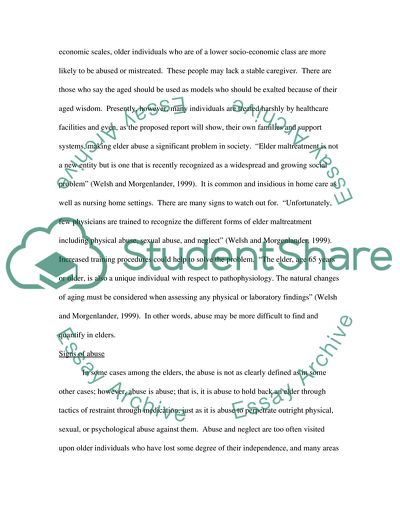Cite this document
(“Abuse of the Elderly Research Paper Example | Topics and Well Written Essays - 1500 words”, n.d.)
Abuse of the Elderly Research Paper Example | Topics and Well Written Essays - 1500 words. Retrieved from https://studentshare.org/social-science/1572107-abuse-of-the-elderly
Abuse of the Elderly Research Paper Example | Topics and Well Written Essays - 1500 words. Retrieved from https://studentshare.org/social-science/1572107-abuse-of-the-elderly
(Abuse of the Elderly Research Paper Example | Topics and Well Written Essays - 1500 Words)
Abuse of the Elderly Research Paper Example | Topics and Well Written Essays - 1500 Words. https://studentshare.org/social-science/1572107-abuse-of-the-elderly.
Abuse of the Elderly Research Paper Example | Topics and Well Written Essays - 1500 Words. https://studentshare.org/social-science/1572107-abuse-of-the-elderly.
“Abuse of the Elderly Research Paper Example | Topics and Well Written Essays - 1500 Words”, n.d. https://studentshare.org/social-science/1572107-abuse-of-the-elderly.


